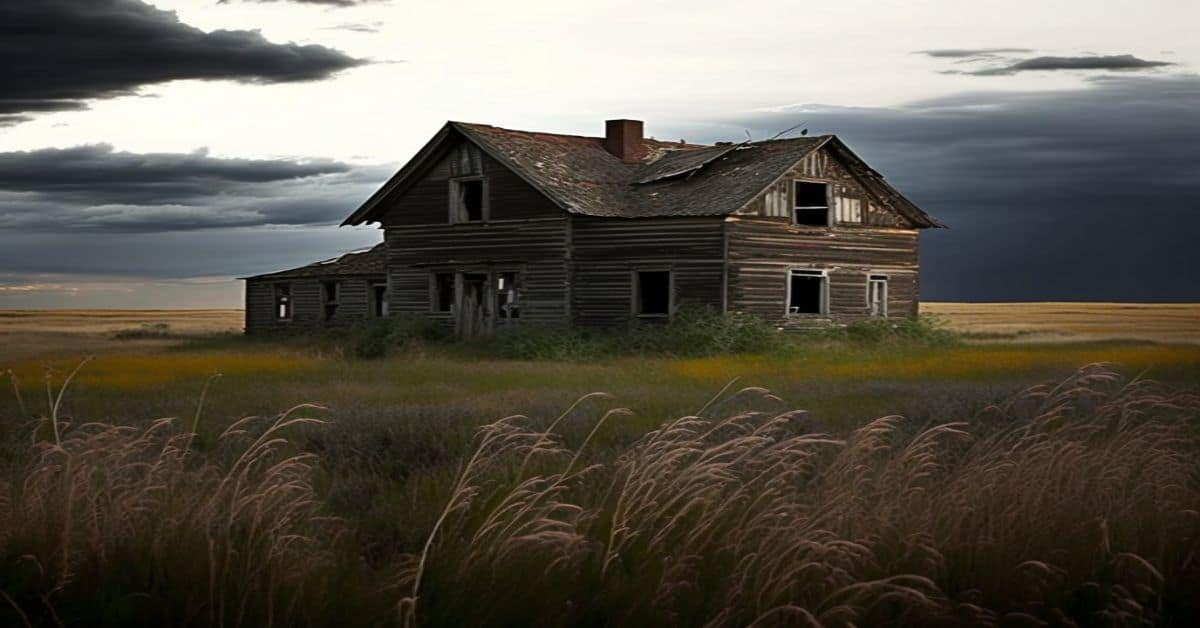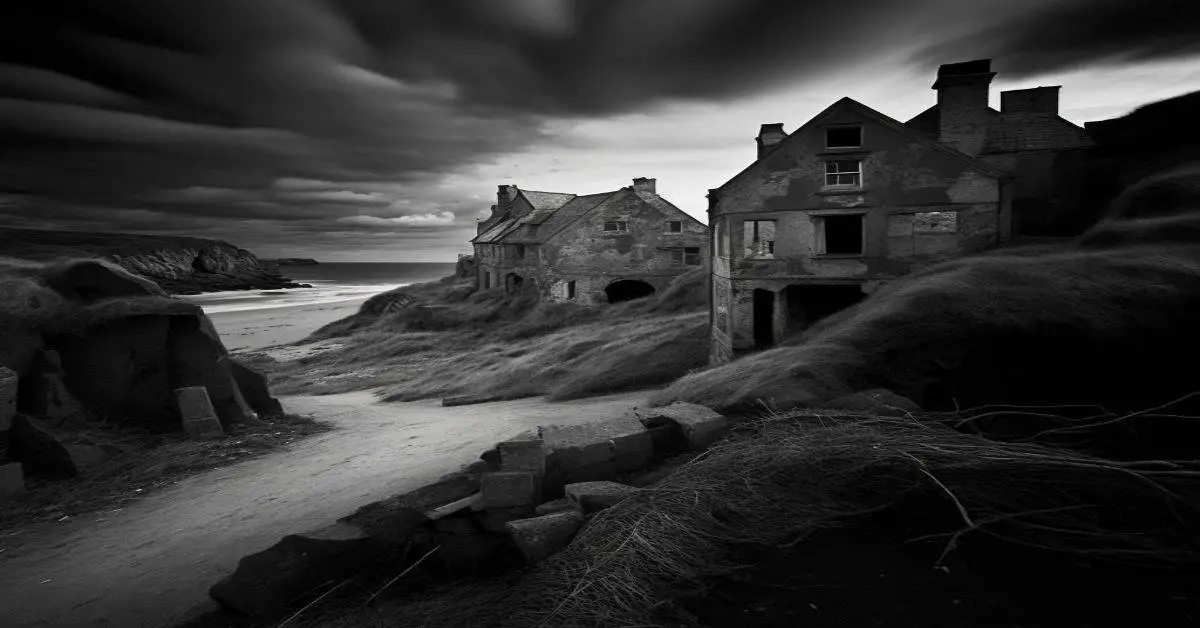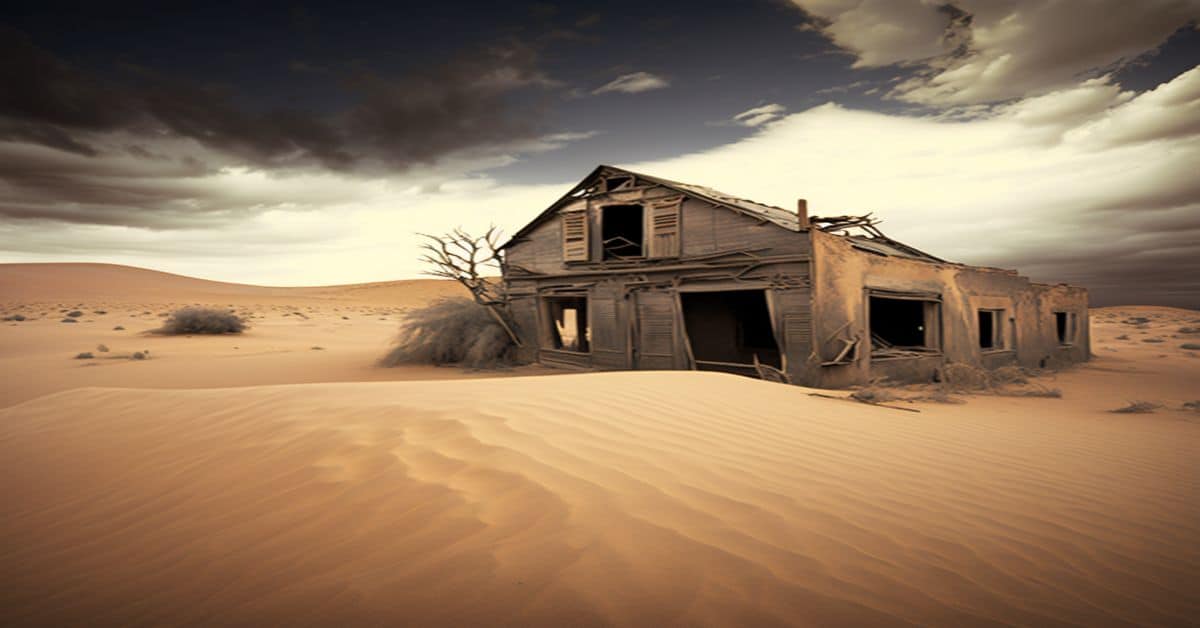Have you ever wondered about the stories and legacies that lie buried beneath the earth’s surface? The tale of Kinzua, a once-bustling Seneca village in Pennsylvania, is one such story that remains hidden from many. With the construction of Kinzua Dam and Allegheny Reservoir in the 1960s, the village was displaced, and its residents were forced to leave their homes behind.
The burial ground was dug up, and the remains of the Seneca people were moved, causing immense pain and loss to those who watched their loved ones being hauled out of the ground. Today, Kinzua is considered a ghost town, but its history and impact on the environment and wildlife in the area remain significant.
This article will delve into the haunting tale of Kinzua, exploring the dam’s construction, the Seneca people’s displacement, and the village legacy that still reverberates today. Through an objective and analytical lens, we will examine the history of Kinzua and its people, the controversies and protests surrounding dam construction, and the tourism and environmental impact that resulted.
By exploring the past and present of Kinzua, we hope to shed light on a story that deserves to be heard and remembered.
Key Takeaways
- Kinzua, Pennsylvania, was a Seneca village displaced by the construction of Kinzua Dam and Allegheny Reservoir in the 1960s.
- The village burial ground had to be dug up and moved, causing the people to watch as their ancestors and loved ones were being hauled out of the ground.
- Kinzua, Pennsylvania, is now considered a ghost town, and the area is still sacred to the Seneca Nation of Indians.
- The Kinzua Dam and Allegheny Reservoir are popular tourist attractions but have significantly impacted the area’s environment and wildlife.
History and Displacement
The history of Kinzua involves the displacement of a Seneca village during the construction of the Kinzua Dam and Allegheny Reservoir in the 1960s.
The village had a rich history and culture and was a significant part of the Seneca Nation of Indians.
The dam’s construction led to the forced displacement of the village, with the residents being relocated to other areas.
This displacement had a traumatic impact on the community, with traditional practices and cultural ties being lost in the process.
One of the most significant losses experienced by the community was the removal and relocation of the village’s burial ground.
The people of this community watched as their ancestors, parents, siblings, children, and the old ones were being hauled out of the ground.
The graves were dug up and transplanted into the new burial ground up in New York.
This displacement violated the traditional practices and beliefs of the Seneca people and had a lasting impact on their community.
Controversy and Protests
Controversy and protests surrounded the construction of the Kinzua Dam, with the Seneca Nation of Indians vehemently opposing its implementation.
The dam’s building meant the displacement of the Kinzua village and the destruction of their burial grounds, which held deep spiritual and cultural significance to the Seneca people.
The tribe’s opposition to the dam was rooted in the belief that it would cause irreparable damage to their sacred land and way of life.
The government’s response was to disregard the tribe’s concerns and proceed with the construction, leading to a clash of cultures akin to two opposing currents colliding in a river.
The impact on the community was significant, as the construction of the Kinzua Dam caused the Kinzua village’s displacement and its inhabitants’ forced relocation.
The loss of their ancestral land and the destruction of their burial grounds were devastating to the Seneca people.
Their protests were met with indifference, and their cultural heritage was disregarded in the government’s quest for flood control and hydroelectric power.
The controversy surrounding the Kinzua Dam remains a poignant reminder of the devastating impact that governmental decisions can have on indigenous communities.
Tourism and Environmental Impact
Tourism and the environmental impact of the Kinzua Dam are significant factors in the ongoing discussion surrounding the dam’s construction and its effects on the surrounding area.
The Kinzua Dam and Allegheny Reservoir attract visitors worldwide, offering opportunities for outdoor recreation such as fishing, boating, and hiking. The Kinzua Bridge, once the tallest railroad bridge in the world, is now a popular tourist attraction, offering a skywalk for visitors to enjoy breathtaking views of the surrounding landscape.
Despite the area’s popularity, the dam’s construction has had a significant impact on the environment and wildlife in the surrounding area. The creation of the Allegheny Reservoir flooded over 12,000 acres of land, displacing wildlife and altering the natural landscape.
Additionally, the dam’s construction caused controversy and protests among the Seneca Nation of Indians, who opposed the project due to its impact on the cultural preservation of their ancestral land.
Despite these challenges, the Kinzua Dam and Allegheny Reservoir continue to be popular tourist attractions, offering visitors a glimpse into the history and natural beauty of the area.
Frequently Asked Questions
What was the population of Kinzua before the displacement caused by the dam construction?
The population estimate of Kinzua before displacement caused by dam construction is uncertain. However, the impact on Seneca culture was significant with the village’s forced relocation and the disturbance of the burial ground.
How did the Seneca Nation of Indians respond to the displacement of their community?
The Seneca Nation’s protests against the Kinzua Dam were due to the displacement of their community and the destruction of their cultural heritage. They continue to advocate for cultural preservation and have opened a museum and cultural center nearby.
What kind of wildlife can be found in the Allegheny Reservoir area?
The Allegheny Reservoir area boasts diverse wildlife sightings, including bald eagles, black bears, and white-tailed deer. Hiking trails offer ample opportunities to observe these creatures in their natural habitat, like a kaleidoscope of nature’s beauty.
Are any efforts being made to restore the original burial ground of the Kinzua community?
Efforts to restore the original burial ground of the Kinzua community are ongoing. The Seneca Nation was displaced and reacted negatively to the displacement of their ancestors. The restoration project is an important step towards healing and honoring their heritage.
What kind of educational programs are offered at the Kinzua Dam visitor center?
The Kinzua Dam Visitor Center offers various educational programs that enhance the visitor experience, including exhibits on hydroelectric power, flood control, and the history of the dam’s construction. Visitors can also learn about the area’s flora and fauna, and the cultural significance of the reservoir to the Seneca Nation of Indians.


